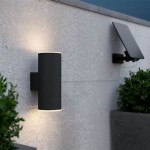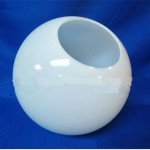How Do Outdoor Wood Burning Stoves Work: A Comprehensive Guide
Outdoor wood-burning stoves, also known as chimeneas, fire pits, or wood stoves, offer a captivating and cozy ambiance in outdoor spaces. Whether you're enjoying a chilly evening on the patio or hosting a bonfire-inspired gathering, understanding how these stoves operate is crucial for optimal use and safety.
Firebox Design
Outdoor wood-burning stoves feature a firebox, which is the central chamber where the fire burns. The firebox is typically made of heat-resistant materials such as cast iron, steel, or firebrick to withstand intense temperatures. The design of the firebox determines the efficiency of the stove and the quality of the burn.
Air Circulation
Proper air circulation is essential for the efficient combustion of firewood. Outdoor wood-burning stoves typically have vents and adjustable dampers to control the flow of air. Air enters the firebox through the bottom vents, ensuring the flames receive a steady supply of oxygen. The dampers allow you to regulate the intensity of the fire by increasing or decreasing the airflow.
Fuel Type and Burning Process
Wood-burning stoves rely on firewood as fuel. The type of wood used can significantly affect the quality of the burn and the heat output. Seasoned hardwood, such as oak, maple, or beech, burns more efficiently and produces less smoke than softwood. The burning process involves starting a fire in the firebox, allowing the flames to establish, and then adding fuel as needed.
Heat Transfer
Outdoor wood-burning stoves generate heat through the combustion of wood. The stove's structure and materials play a crucial role in transferring heat effectively. Heat radiates from the firebox outwards, warming the surrounding air and objects. Some stoves also feature a built-in cooking surface or a heat exchanger to maximize heat utilization.
Safety Considerations
Operating outdoor wood-burning stoves safely requires following certain guidelines. Proper placement is essential, ensuring a safe distance from flammable materials such as trees, fences, and furniture. Regular cleaning and maintenance are crucial to prevent ash and debris buildup, which can lead to chimney fires. Additionally, using dry, seasoned firewood and avoiding overloading the stove helps minimize smoke and potential hazards.
Conclusion
Outdoor wood-burning stoves can enhance your outdoor experiences by creating a warm and inviting atmosphere while providing a convenient way to enjoy the warmth of a fire. Understanding the essential aspects of their operation, including firebox design, air circulation, fuel type, heat transfer, and safety considerations, will ensure optimal performance and safe operation for years to come.

How An Outdoor Boiler Works Ez Boilers

Outdoor Wood Boiler Vs Furnace

Air Outdoor Wood Boilers Wisconsin Department Of Health Services

Frequent Questions About Wood Burning Appliances Us Epa

Outdoor Wood Burning Furnace Boilers From Madison Wi To E Iowa

Outdoor Wood Coal Boiler Installation

Wood Boiler Basics Obadiah S Boilers

Best Outdoor Wood Furnace Central Boiler

Truhybrid Hearthstone Stoves

Outdoor Wood Boiler This Is How We Heat Our Home And Water Why I Am Looking Into Make Lye From Ash H Furnace
Related Posts







